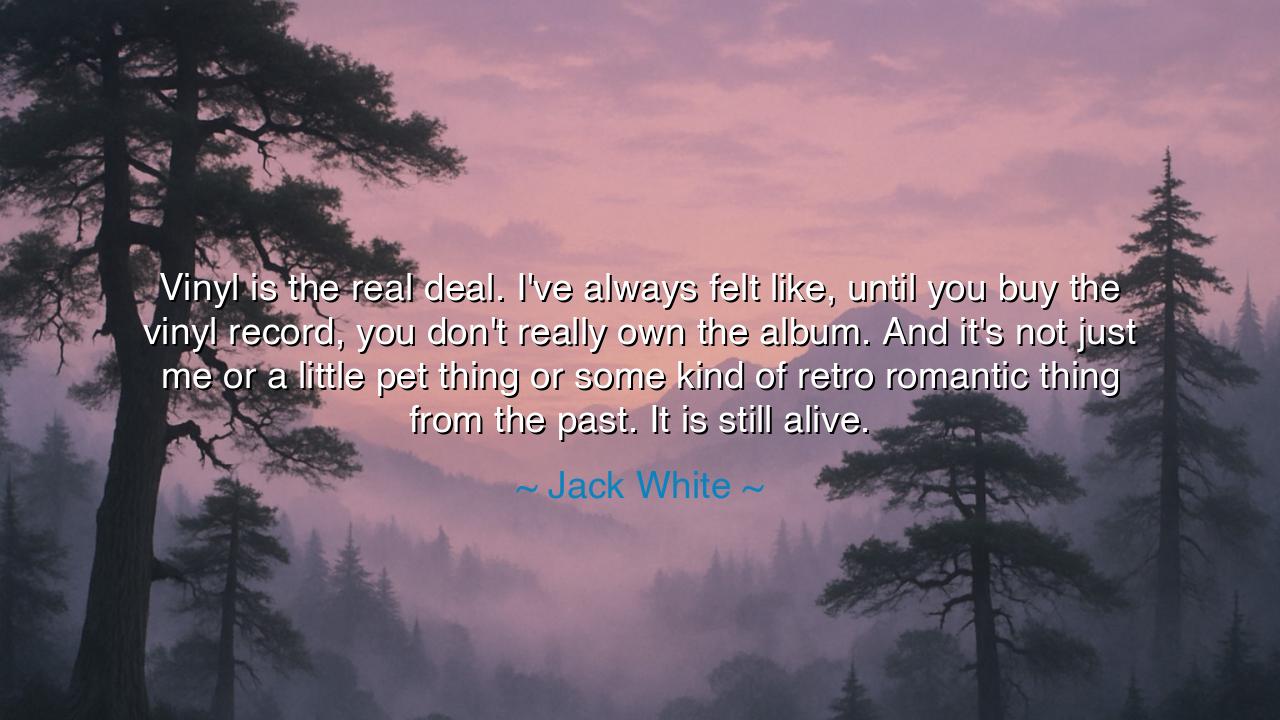
Vinyl is the real deal. I've always felt like, until you buy the
Vinyl is the real deal. I've always felt like, until you buy the vinyl record, you don't really own the album. And it's not just me or a little pet thing or some kind of retro romantic thing from the past. It is still alive.






“Vinyl is the real deal. I’ve always felt like, until you buy the vinyl record, you don’t really own the album. And it’s not just me or a little pet thing or some kind of retro romantic thing from the past. It is still alive.” So speaks Jack White, prophet of raw sound and champion of the tangible in an age that drifts toward the invisible. His words are not only about vinyl records, but about the human hunger for weight, for presence, for the reality of art as something you can hold in your hands.
In this declaration lies a protest against the fading of the material world. For digital songs float like ghosts in the ether—downloaded, streamed, consumed, yet never truly possessed. But a vinyl record is heavy, real, circular like the wheel of time. It has grooves carved by a needle, grooves that capture the breath and sweat of the artist. To hold vinyl is to hold a relic of creation, to say: This belongs to me. This is part of my life, my memory, my home. In this sense, ownership is not mere possession, but intimacy.
The ancients, too, understood the sanctity of the tangible. Consider the scrolls of Alexandria, each one painstakingly copied by hand. Knowledge was not truly owned until it was inscribed upon papyrus, carried, read, touched. To the Greeks, to own a scroll was not to store words but to embrace wisdom. Just so, Jack White insists that to own an album is not to store digits on a screen, but to hold the artifact in which the music has been incarnated.
This devotion to vinyl is also a defense of ritual. To play a record is not passive; it is ceremony. You slide the disc from its sleeve, place it gently on the turntable, lower the needle, and wait for the crackle that precedes the song. Each step is reverence, each motion a reminder that art deserves attention. Contrast this with the ease of digital skipping, where songs flicker by like leaves in the wind. Vinyl requires presence; it demands that we listen not as consumers, but as participants.
History offers us examples of how art with weight endures. The frescoes of Michelangelo still command awe because they live on stone, not pixels. The symphonies of Beethoven, written by hand on parchment, still carry the urgency of the moment they were inked. Likewise, the vinyl record keeps alive the sacred link between artist and listener, insisting that music is not air alone but matter, pressed into shape, meant to be touched as well as heard.
Jack White’s insistence that vinyl is “still alive” carries a heroic challenge. He calls us to resist the erosion of meaning in an age of infinite convenience. To choose vinyl is to choose slowness, presence, reverence. It is to say: I will not let music become disposable, nor art be reduced to background noise. I will treat it as something alive, something breathing, something worthy of my full attention.
The lesson is clear: in a world rushing toward the intangible, seek the tangible. In music, in books, in love—cherish what you can touch, what endures, what requires ritual and care. Buy the record, hold the page, write the letter. Do not let your life become weightless. For as Jack White teaches, the real deal is not the fleeting convenience of the digital, but the living presence of the tangible, which binds memory, body, and soul together into one enduring song.






AAdministratorAdministrator
Welcome, honored guests. Please leave a comment, we will respond soon